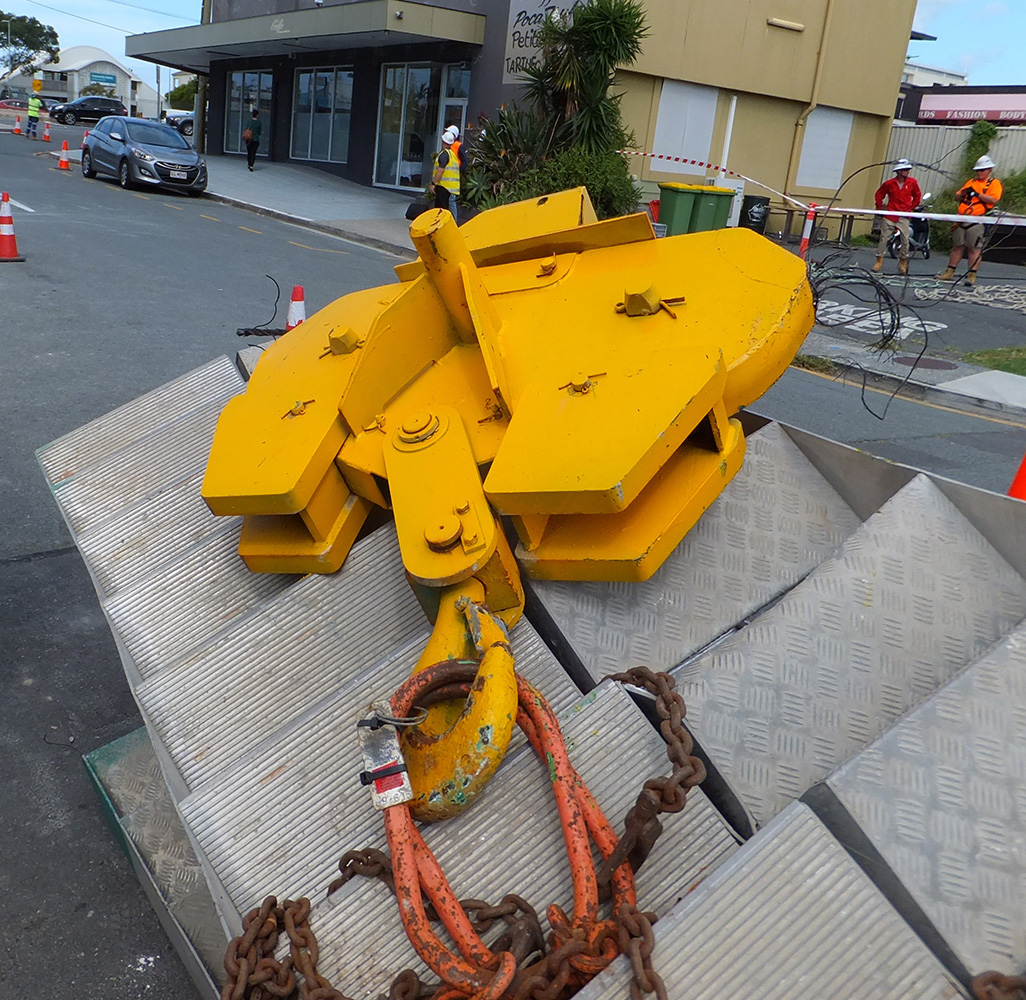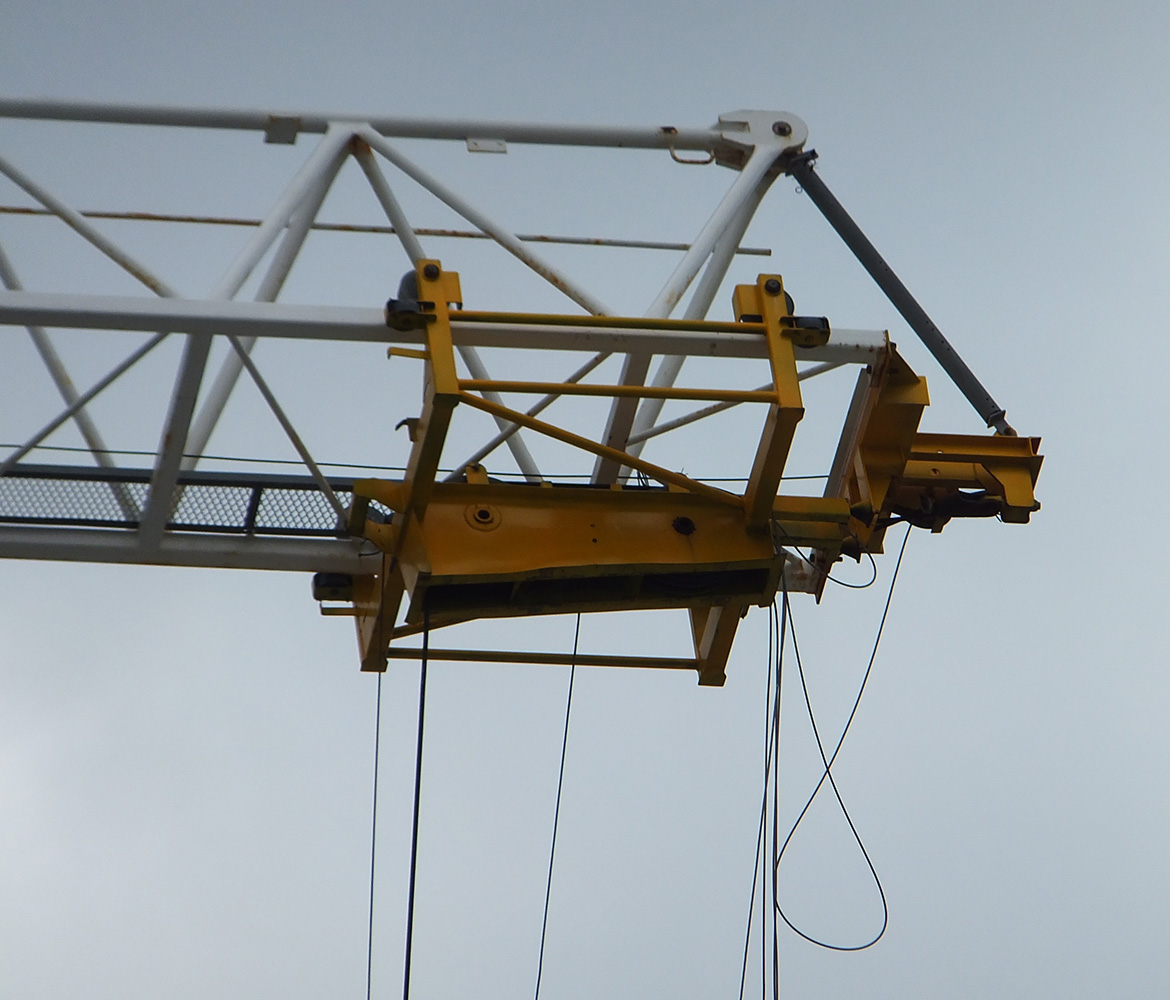Tower crane hoist rope and brake failures
Issued: 20/03/2019
Last Updated: 20/03/2019
Purpose
The purpose of this safety alert is to highlight the risks of hoist rope and brake failure on tower cranes. Employers, builders, workers and crane operators should apply the principles in this alert to any crane with a hoist rope.
Background
In March 2019 two separate free fall incidents have occurred on Comansa hammerhead tower cranes in Queensland. In the first incident the hoist rope catastrophically failed, dropping a hook block weighing approximately 500 kilograms to the ground. It is understood the hoist rope failed when the hook block was being hoisted up and contacted the hook trolley (also known as two blocking). The falling hook block caused the hook trolley to travel along the jib at speed and collide with the jib end, causing significant damage to the crane. The trolley rope was also cut in the incident. Both the hoist rope and trolley rope ends dropped onto the roof of a house on the other side of the street next to the site. The hoist rope was rigged in double fall, with the end of the hoist rope anchored to the end of the tower crane jib.
In the second incident a rubbish skip of approximately 7 tonne dropped 11 metres when the crane operator was attempting to lower the skip onto the road. The load started to free fall and the hoist brake was unable to hold the load.
There have now been three recent incidents involving tower cranes in Queensland. The previous incident occurred in October 2018 on a luffing tower crane, but was not caused by two blocking. The cause of this incident was still being investigated when this alert was issued.
Contributing factors
In the first incident it appears the primary cause of the incident was the hoist limit of the crane not functioning.
Typically, the hoisting limit switch system on a tower crane includes a:
- deceleration function that slows the hoisting speed down
- final limit switch that physically stops the hook two blocking.
Both limiting functions prevent damage to the hoisting system and help prevent catastrophic failure of the hoist rope.
In the second incident, the hoist brake was unable to hold the load. Following the incident, the hook block could be hoisted up and was held at height, so there appears to have been no obvious mechanical failure of the drive system. However, the way the brake is applied and the ability of the brake to hold the load are in question. It appears that the fault on the tower crane is intermittent.
 Photograph 1: Dropped hook block (rope failure). |  Photograph 2: Hook block trolley after colliding with end of crane jib (rope failure). |
Action required
All safety features provided by the crane manufacturer, including the hoist limit, must remain operational and are not to be overridden for normal operation of the crane.
The only legitimate reason for temporarily overriding the hoist limit switch is for rigging purposes, including when the crane is commissioned, dismantled or the rigging set up on the hook block is being changed (e.g. some tower cranes can be changed from two to four rope falls).
When selecting the tower crane for a particular site it is important that the hook height is high enough to carry out all lifting activities without the need to override the crane's safety features.
Wherever a free fall of the crane winch is detected, the crane is to be removed from service. As the fault with the crane could be intermittent, simply carrying out a function test of the crane, will be inadequate on its own. The crane's control system and circuitry are to be checked by competent persons experienced in the safe operation of tower cranes. Prior to re-entering service, the fault is to be accurately verified, defective components replaced and an inspection of the crane carried out by a competent person (i.e. a mechanical engineer who is a Registered Professional Engineer of Queensland). The inspection is to verify that no mechanical damage has been caused to the crane.
Further information
Further information can be obtained from the following:
- Tower crane Code of Practice 2017 (PDF, 1.56 MB)
- Mobile crane Code of Practice 2024 (PDF, 2.29 MB)